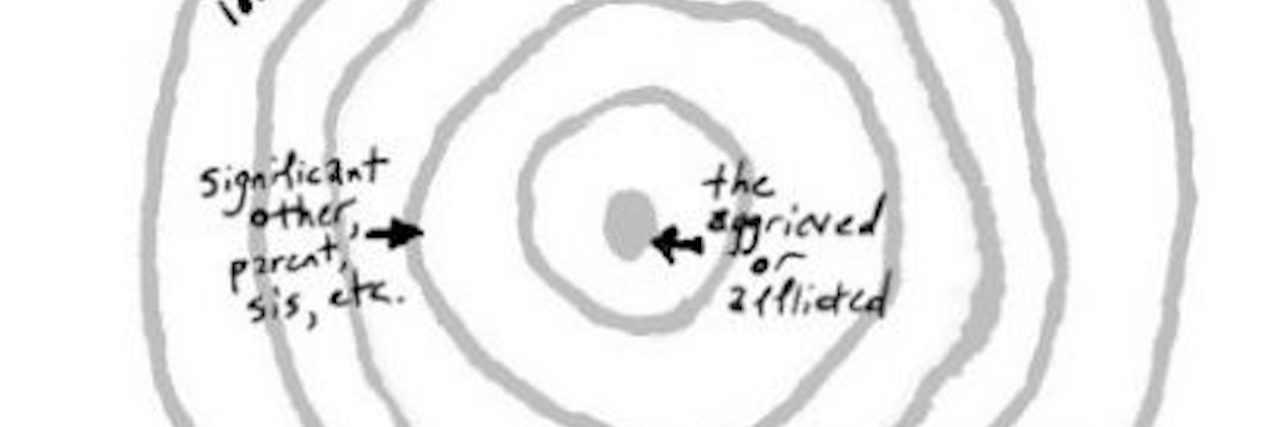Have you ever been told exactly what you didn’t need to hear during a difficult moment?
Maybe during your messy break-up your coworker blurted out incredulously, “Why are you so upset? She treated you terribly!” Maybe you experienced a heartbreaking miscarriage and your best friend’s first response was to bypass the grieving process and laundry-list things you can try next time to make the pregnancy “last.” Or maybe as an adult you were hospitalized for a serious medical issue and refused to take visitors, which prompted your estranged mother to scream to your partner, “I deserve to be there, he’s my baby!”
Though these situations are different, they all have one thing in common. The people responding to the person in need said exactly the wrong thing — and likely made it worse for that person.
That’s where Ring Theory comes in. Created by clinical psychologist Susan Silk and her friend Barry Goldman, Ring Theory trains people on “how not to say the wrong thing” when someone is going through a traumatic experience or crisis. The best part? It works for any kind of crisis, whether it be health-related, financial, romantic, developmental or existential.
Ring Theory is best shown through the simple diagram pictured below. In the diagram, you will see an inner circle labeled “the aggrieved or afflicted,” meaning the person at the center of the crisis. For example, if your friend Betty just lost her job, you would put Betty’s name in the middle of the circle.

The concentric circles surrounding the inner circle represent (and rank) other groups who are affected by the inner circle person’s crisis as well, but not as directly. In Betty’s case, the concentric circles might include her boyfriend, her family members, best friends and old coworkers — with her boyfriend being most affected by Betty’s crisis and her old coworkers being least affected.
In Ring Theory, the person in the innermost circle can say anything about their circumstances to anyone. For example, Betty can gripe about her old unfair manager and her financial worries about unemployment to her boyfriend, family members, friends or old coworkers. No one is off-limits to the person in the inner circle.
People in the outer rings can say anything they want as well, but here’s the catch: they can only do so to people in rings further out. So if Betty’s boyfriend is really disappointed by the news that Betty lost her job and therefore won’t be able to afford the trip they’d been planning, his feelings of disappointment are valid and understandable, but he should talk to his own friends about it, not Betty. This doesn’t mean Betty’s boyfriend can never talk about his disappointment with Betty, but he shouldn’t right now because Betty is feeling financially vulnerable and shaken from losing her job.
As you might have gleaned from the diagram, the name of the Ring Theory game is “comfort in, dump out.” Essentially this means if you are addressing someone closer to the inner circle than you are, you are trying to help. This means comforting them, validating their struggles — or just being quiet and listening. If you need to “dump” or share your emotional experience, only do so with people further away from the inner circle than you are.
As we mentioned above, Ring Theory can work for folks going through any kind of traumatic experience. The theory can work when you are supporting your partner who just lost a sibling to cancer, a friend who experienced sexual assault or a parent experiencing financial hardship. No matter what the crisis is, just think, “comfort in, dump out.” It’s really that simple.
For more from our #TraumaSurvivors community, check out the following stories:
Image via Wes Bausmith/Los Angeles Times

